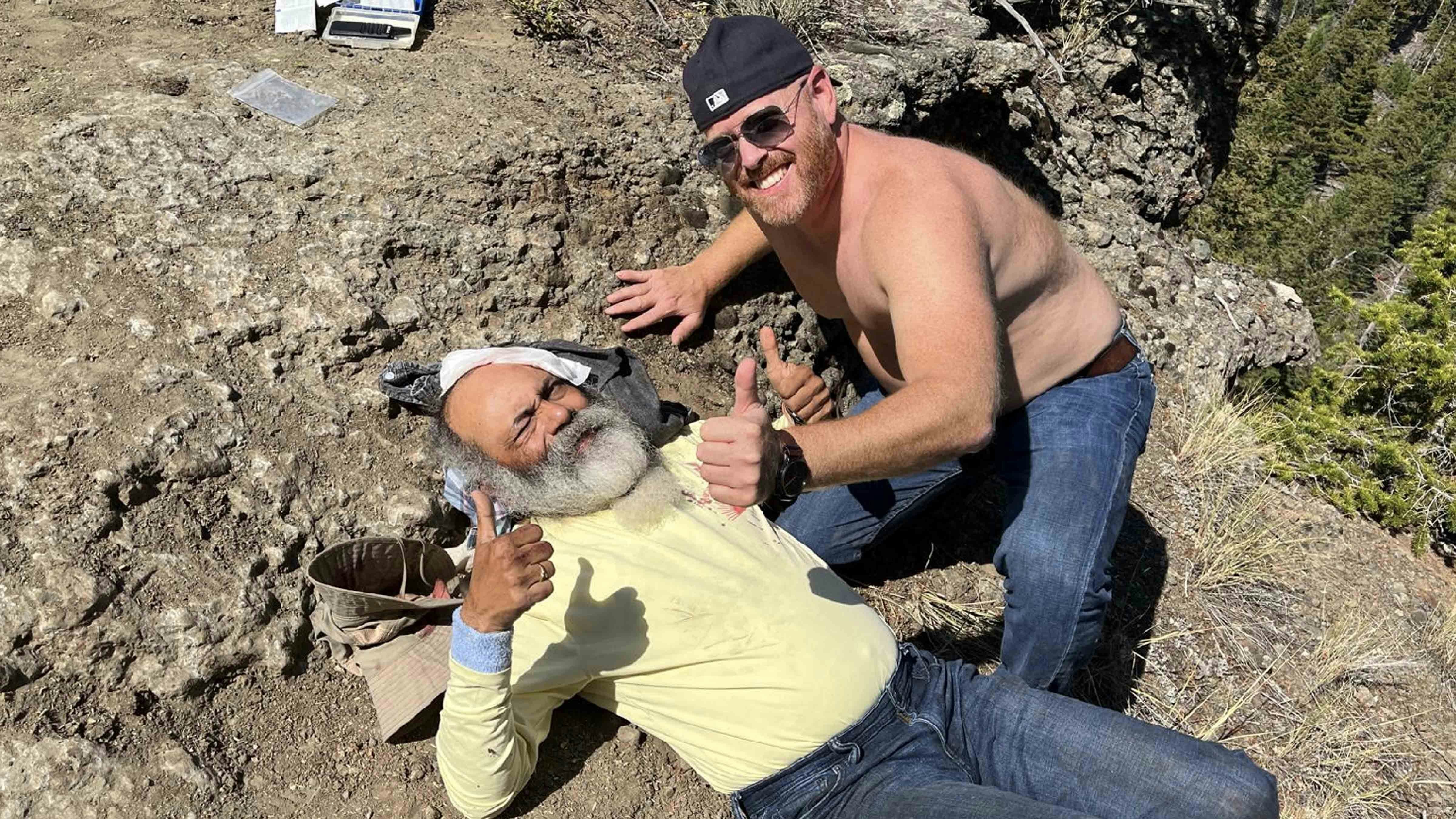Video by Hanna Brock and Reilly Strand.
When Bob Budd works the lever action on his model 1894 Winchester rifle, it runs as smoothly as it did a century ago.
The worn metal and wood on the rifle tell the tale of countless hunting trips in Wyoming in all sorts of weather. Budd has no idea how many .25-35 Winchester cartridges have been fired in it, but it still shoots straight and true, he told Cowboy State Daily.
It's been in his family for about as long as Wyoming has been a state, for five generations. His grandfather and father killed their first deer with it, as did Budd and his two sons.
So long as his family keeps taking good care of it, there’s no reason to think it won’t still be dropping deer a century from now.
And for his family, it’s so much more than just a rifle, said Budd, who lives in Cheyenne, but has deep family roots in the Big Piney area.
“I think it's a talisman. A rifle is a talisman for those of us who grew up in that culture,” he said.
Not Sure Where It Came From
Winchester’s legendary lever-actions have been called “the rifle that won the West,” and they used to be common all over Wyoming, Budd said.
His Model 1894 came into his family through his great-great uncle, Wesley Mills, who gave it to his great-grandmother, Pearl Spencer, who lived in Big Piney at the time.
It’s not known whether Mills bought the rifle new, or purchased it used from a previous owner, said Budd, who is a lifelong hunter and wildlife conservationist.
Spencer used it to slay bobcats trying to raid her chicken coop.
“She was a crack shot,” he said. “Whenever there was a ruckus coming from the chicken coop, she’d grab this rifle and off she’d go.”
Good For Every Kind Of Game
Over the decades and across generations, the rifle has been used to drop deer, elk, bighorn sheep, bear and moose, he said.
That’s impressive for a .25-caliber cartridge. But Budd said that in his family, the rule is to get in close, take careful aim and make a clean, one-shot kill.
The practical range for an old lever-action rifle is about 100 yards. And hunting with such a weapon has taught generations of his family the best of ethics, Budd said.
He still recalls getting his first deer with it, on a frigid day, with about a foot of snow on the ground.
“Dad and I went down the ridge, snuck down to where we could get within about 80 yards (of the deer), and with open sights, iron sights. And the deal was, take your time, breathe, one shot, kill. And that's what we did,” he said.
Great Saddle Guns
Winchester lever-action rifles were popular because of their rugged practicality.
Their flat profile also made them ideal for carrying in saddle scabbards. And lever-action rifles can easily be fired either left-handed or right-handed.
“In my family, most of us shoot left-handed,” Budd said.
Old Winchesters came in a variety of chamberings, and the .25-35 used to be common and readily available in any local store.
However, as more modern calibers began to take over the market, only the .30-30 Winchester cartridge has remained relatively easy to find.
It’s almost impossible to find .25-35 ammunition these days, Budd said.
So, when one of his sons called to report that he found some in a small out-of-the-way store in another state, Budd knew it was an opportunity too good to pass up.
He can’t recall just where the store was, but didn’t hesitate to tell his son to “buy all four boxes.”
Hunting Is About The Experiences
The old Winchester doesn’t get used quite as much as it used to. Budd now does most of his hunting with a single-shot Ruger rifle chambered for another legendary Winchester hunting cartridge, the .270.
He sometimes worries that technology has taken over hunting, as it has so many other aspects of modern life.
Rifles with fancy optics and groundbreaking new cartridges allow hunters to shoot farther than ever, but Budd said there’s still value to being patient, stealthy and getting in close for a clear shot.
He recalls memories from hunting trips with the old Winchester. Such as during an elk hunt, stopping to watch two cow moose engage in an epic tussle with each other, only 20 yards away.
“They had no idea we were there, and they didn’t care,” he said.
Or the time when one of his sons had the rifle laid across a log, and a chipmunk came over and perched right atop the barrel.
“Those are the things you remember about hunting,” he said.
A Connection To The Past
Budd recently used the old Winchester – along with a vintage flyfishing rod that’s also been in his family for generations – as visual aids during a short speech to other outdoors enthusiasts and state officials about the importance of ethics and wildlife conservation.
The vintage outdoor equipment made quite the impression and created a solid connection with Wyoming’s past, he said. And that can help guide the way toward the future of conservation and stewardship.
“If we don't remember where we came from, we'll never know where we're going,” he said.
“Our heritage in this state is so tightly tied to wildlife in the outdoors. And I use this (rifle) as a prop to say, ‘You know, this is something that represents over 100 years of heritage, but it's also 100 years of ethics. It's 100 years of caring for the environments, 100 years of caring for wildlife and agriculture and the habitats that people provide for those species,’” Budd said.
Mark Heinz can be reached at mark@cowboystatedaily.com.






